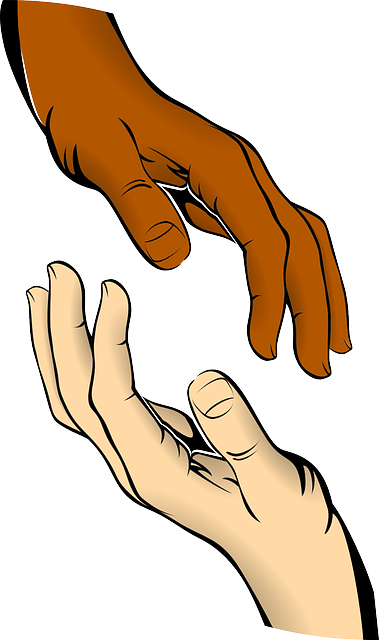The reader’s interest in ‘faith-healing’ may have been revived after the revelation that England manager Glenn Hoddle recently asked Robbie Fowler to visit his faith-healer in an attempt to restore his form. Robbie apparently told reporters, ‘I’m a Catholic lad and if I want help I’ll go to see the local priest, not a faith-healer.’ This response underlines the widely held view that faith healing is a religious, rather than a purely therapeutic activity.
What is faith-healing?
The term ‘faith-healing’ is an umbrella designation. It includes all treatments which involve some kind of conviction on the part of the practitioner or ‘healer’. It often includes the laying on of hands, done in the belief that a healing ‘energy’ or ‘force’ is thereby transmitted to the patient. It may, however, also include remote, or non-contact, forms of healing. It is usually reserved for activities taking place outside mainstream churches.
Readers may be confronted with a friend or colleague who is consulting a faith-healer, or may even be considering such an approach themselves. This article outlines key questions to raise when evaluating faith-healing, from both a medical and a Christian viewpoint. When assessing any form of treatment for a medical condition, two vital concerns are the effectiveness of the therapy, and its safety.

Does faith-healing work?
There is no good scientific evidence that faith-healing is an effective alternative medical treatment. However, proponents might argue that the paucity of evidence simply reflects the fact that the carefully controlled studies needed to prove benefit have not been carried out. Studies which have been performed may not been published in well-recognized medical journals where papers are subject to careful editorial scrutiny prior to acceptance (a process known as peer-review).
However, when people are seeking relief from illness or distress, they may be led to believe that a certain form of treatment has been proven to carry benefit. It is very important that they should not be misled, particularly in the UK where faith-healing is generally offered outside the National Health Service and has to be paid for.
A recent article in the medical journal The Lancet reported the findings of an experiment carried out by a nine-year-old girl on twenty-one practitioners of an alternative technique called therapeutic touch (TT) which is widely practised by nurses in the USA. Practitioners claim to improve various conditions, including Alzheimer’s disease and thyroid disorders, by correcting ‘energy-field disturbances’. They claim that they are able to sense and ‘repattern’ these ‘disturbances’ by passing their hands over the patient’s body at a distance of about 10 centimetres.

In this study the TT practitioners were requested to place their hands on a table, palms upwards. An opaque screen shielded their field of vision from the rest of the room. To test the hypothesis that the practitioners could sense the ‘human energy field’ radiated by her hand, the schoolgirl then held her hand just above the practitioner’s left or right hand (decided by the toss of a coin) and asked the practitioners to indicate over which hand she was holding hers. The TT practitioners identified the correct hand in only 44% of 280 trials, which is close to what would be expected from chance alone. The Journal of the American Medical Association concluded, ‘TT claims are groundless and … further use of TT by health professionals is unjustified.’
The placebo effect
It is well established that the neither the intuition of practitioner nor that of the patient is a good guide to the effectiveness of any particular treatment. This is partly because both practitioners and patients tend to favour therapeutic intervention as opposed to none, and partly because of the placebo phenomenon.
A placebo is a pharmacologically inert compound prepared to satisfy the patient’s wish for treatment rather than to treat disease. One third of people given an inert compound to relieve a particular symptom will report relief of the symptom. This is called the ‘placebo effect’. The personality of the doctor or therapist will often itself exert an additional and powerful placebo effect. Where faith-healing is being practised, with its attendant sense of awe and mystery, it is clear that the outcome could be attributable, at least in part, to this phenomenon.
Is faith-healing safe?
A number of things have to be considered. These include inadequate regulation and training of the practitioner, delay in obtaining medical treatment, misuse of authority, and the nature of the source of healing.
Regulation and training
In contrast to orthodox medicine, faith-healing is largely unregulated and its practitioners may have no medical knowledge or training. One body which includes faith-healers is the Confederation of Healing Organisations, which has 8,500 members. All conditions are treated, using both contact and distant healing. No academic qualifications are required of members, although character references are considered prior to recruitment, and there is no clinical or postgraduate training. The length of the training course varies, and medical input is not mandatory. Research is not published in peer-reviewed medical journals.
The Aetherius Society is similar. The name ‘aether’, or ether, refers to the medium formerly believed to fill space and support the propagation of electromagnetic waves. In Greek mythology it referred to the upper regions of the atmosphere. Their methods include ‘spiritual healing’ through laying on of hands, absent healing through a yogic form of prayer, and ‘colour healing’. The society describes itself as a ‘spiritual and educational organization engaged in teaching and practice of healing and various metaphysical sciences and aspects of yoga’. There are no entry qualifications, no clinical training, no examinations or exit qualifications, and the course duration is ten hours. There is no medical input to training, no research, and no published code of ethics.
Delayed medical treatment
When consulting alternative practitioners, patients may delay seeking orthodox medical help, and thereby deny themselves the hope of proven relief. Such a course of action may even prove fatal. This is a particular danger with an activity such as faith-healing, whose practitioners are not generally required to have any medical knowledge, and do not always include in their code of conduct an obligation to tell the patient’s general practitioner that they are providing an alternative form of treatment.
Misuse of authority
Any attempt to affect another individual, whether through medicines, physical touch, or prayer, implies the use of power. This power may be spiritual, psychological or personal. If power is misused in a way that is immoral, the activity becomes at best unhelpful, and at worst seriously harmful. Where any so-called ‘mind-body therapy’ is practised, including faith-healing, the personal characteristics of the faith-healer may, as discussed above, play an important rôle in the healing process. The potential for abuse is therefore greater than that in the more strictly regulated, clinical environment of the hospital or general practitioner’s surgery.
The source of healing
The Bible makes it clear that all that God created in the beginning was good (Genesis 1:31). After the Fall, the creation was corrupted by sin, and evil forces entered the universe, but there is still only one true God (Ephesians 6:12; Deuteronomy 32:39; 1 Corinthians 8:4-6). Consequently, all human activity will ultimately be judged by God as having been righteous or unrighteous (Matthew 12:30-31; Revelation 22:11).
It is indisputable that good medical care practised by a non-Christian doctor is in itself good, and an example of God’s general goodness to mankind (Matthew 5:45). Some, therefore, regard faith-healing as practised by non-Christians as another example of a God-given gift, which should also be regarded as good in its own right (see, for example, Searching for Healing, by Stephen Parsons, Lion Publishing UK, 1995).
The problem with this argument lies in the source of the healing. A non-Christian doctor employs God’s gifts of science and education to benefit the patient, and does not impose his or her beliefs as part of treatment. However, in faith-healing the situation is very different. In this case, the therapist is deliberately using a set of beliefs, which may include faith in a supernatural force, to bring about the healing. The question then arises, who is behind the healing force?
Christians are to worship the one true God alone, and attempting to invoke healing from another spiritual power is sin (Leviticus 19:31). It is clear, therefore, that where the therapist’s world-view is an essential part of the therapy, as in faith-healing, it is critically important for Christians to be sure that this world-view is one they share.
Conclusion
Faith-healing may well increase in popularity and may in future be offered alongside conventional medical treatment. When evaluating faith-healing we need to consider several issues, such as its efficacy (does it work?); its regulation (is the healer trained and competent?); its competition with conventional medical treatment (might it have harmful consequences for the patient?); its use or misuse of authority; and the invocation of spiritual forces opposed to the Lord. These considerations should cause the reader to think carefully before embarking on such treatment or recommending it to others.



